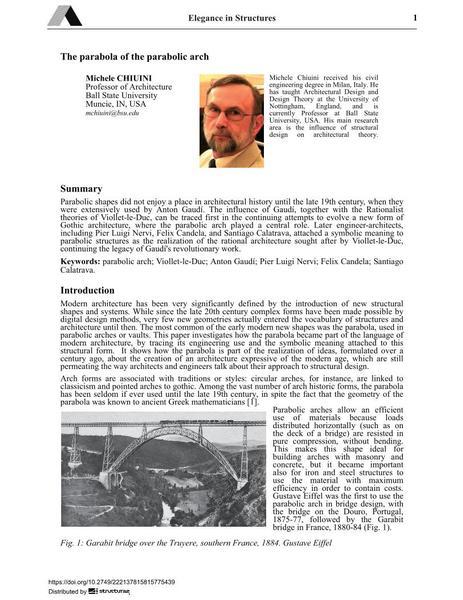The parabola of the parabolic arch

|
|
|||||||||||
Bibliographic Details
| Author(s): |
Michele Chiuini
|
||||
|---|---|---|---|---|---|
| Medium: | conference paper | ||||
| Language(s): | English | ||||
| Conference: | IABSE Conference: Elegance in structures, Nara, Japan, 13-15 May 2015 | ||||
| Published in: | IABSE Conference Nara 2015 | ||||
|
|||||
| Page(s): | 372-373 | ||||
| Total no. of pages: | 7 | ||||
| Year: | 2015 | ||||
| DOI: | 10.2749/222137815815775439 | ||||
| Abstract: |
Parabolic shapes did not enjoy a place in architectural history until the late 19th century, when they were extensively used by Anton Gaudi. The influence of Gaudi, together with the Rationalist theories of Viollet-le-Duc, can be traced first in the continuing attempts to evolve a new form of Gothic architecture, where the parabolic arch played a central role. Later engineer-architects, including Pier Luigi Nervi, Felix Candela, and Santiago Calatrava, attached a symbolic meaning to parabolic structures as the realization of the rational architecture sought after by Viollet-le-Duc, continuing the legacy of Gaudi's revolutionary work. |
||||
| Keywords: |
Santiago Calatrava Felix Candela parabolic arch Viollet-le-Duc Anton Gaudi Pier Luigi Nervi
|
||||
